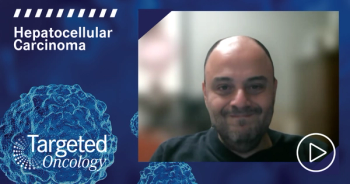
Case 3: Novel Frontline Combination Strategies for Unresectable HCC
Comprehensive insight on several clinical trials analyzing frontline combination therapies for patients with unresectable hepatocellular carcinoma.
Episodes in this series

Transcript:
Ghassan K. Abou-Alfa, MD: Looking into the frontline therapies, maybe I’m little biased because I, on behalf of everybody including Dr Yarchoan, presented the HIMALAYA study, looking at a single dose of tremelimumab plus durvalumab versus sorafenib, looking for superiority, and also looking at durvalumab versus sorafenib looking for noninferiority. The multiple dosing of tremelimumab did not fare well. Patients did not do any better than with durvalumab single agent. There is this booster, jump starter effect of a dose of tremelimumab, 1 single dose, plus contribution of durvalumab. The data are here, but I of course would like to defer to Dr Yarchoan to discuss the data and give us his reflection on it.
Mark Yarchoan, MD: As someone who is relatively new to the field of HCC [hepatocellular carcinoma], I feel like I’ve come into this field at the best possible time, when we have so many new options. My hat goes off to people like Ghassan, who were treating this disease when really all we had was sorafenib. I think it’s great to have more options in the frontline setting. I think the appeal of this option is 2 things. The first one is that this is a truly non-VEGF option, so for patients at significant risk of bleeding, patients with recent surgery, recent strokes, variceal bleeding, it’s great to have a non-VEGF option, and one that actually beats sorafenib in terms of survival. I think the other feature of these data that stands out to me is just the durability of the responses. This is something we all expected based on the mechanism of action here with CTLA-4, but the 3-year survival of over 30% is a new benchmark in HCC and something we haven’t seen before with other therapies. This is an important first-line option for patients and something to think about for patients where you have time to see a response, for patients who can’t get VEGF therapy, and patients for which you really care about the 3-year survival.
Ghassan K. Abou-Alfa, MD: I couldn’t have said it better. Thanks so much, Mark, for your kind notes. You’re absolutely right; this is really changing the field altogether. But not every combination is a combination, because as much as we were excited about the HIMALAYA study’s positive outcome, the COSMIC-312 study, looking into cabozantinib plus atezolizumab versus sorafenib, did not deliver that well. The interim analysis did not show any statistical significance for overall survival. This is despite an improvement in PFS [progression-free survival]. The PFS story in regard to checkpoint inhibitors, as we’ve just mentioned, is questionable, but nonetheless, the survival is a key element. It’s enough that the final survival data were just reported barely over a month ago, and they were negative, leading to less interest and not pursuing further the cabozantinib plus atezolizumab.
This brings up an important question, which is, would it really matter what the combination is? It seems so. I will revise what we just spoke about, which is atezolizumab plus bevacizumab. We spoke about durvalumab plus tremelimumab. We can also talk about lenvatinib plus pembrolizumab, which is a study that’s still ongoing despite it having positive data in regard to the phase 2 study, which already is published in the Journal of Clinical Oncology, looking at this combination. The question I have for Dr Singal is, it seems it does matter what you’re combining therapies with, so hepatologically speaking, why does it matter?
Amit Singal, MD: I would say from a hepatology perspective, obviously we want to see efficacy from these agents, but also safety and tolerability. I think to have these different treatment options, you can start to select this based on some of those other patient characteristics. For example, we already talked about if somebody has significant portal hypertension and a history of variceal bleeding, etc, you often are going to be less enthused about VEGF therapy. So atezolizumab and bevacizumab may not be possible, such as the case we discussed earlier. Now having something like durvalumab and tremelimumab would give you a non-VEGF option in that patient. By having all these different options with different combinations, you now have options that you may plug in for certain subgroups of patients. It’s a tough disease because it’s a disease within a disease, so you’re not only managing the HCC, but also the cirrhosis.
Transcript edited for clarity.










































